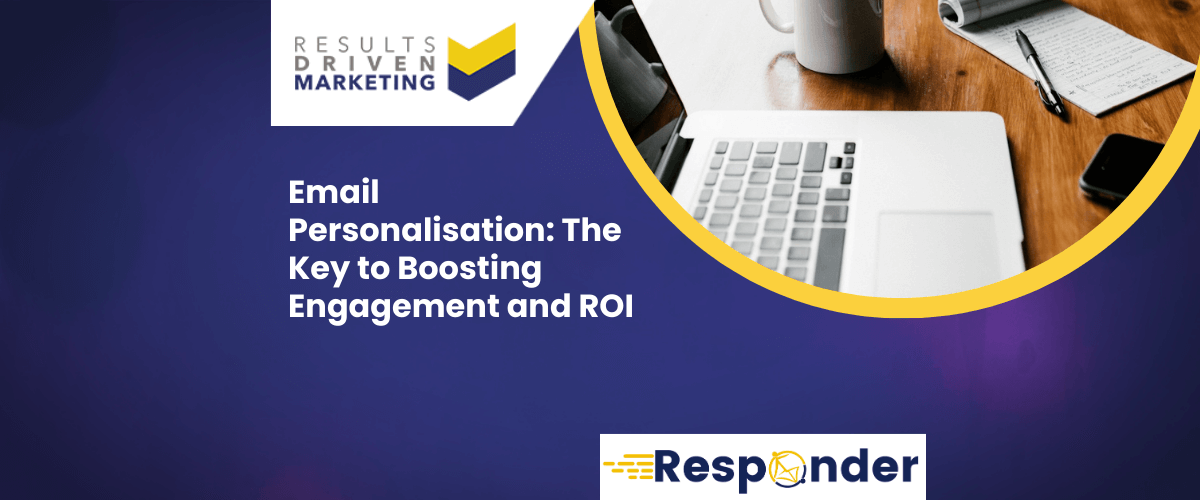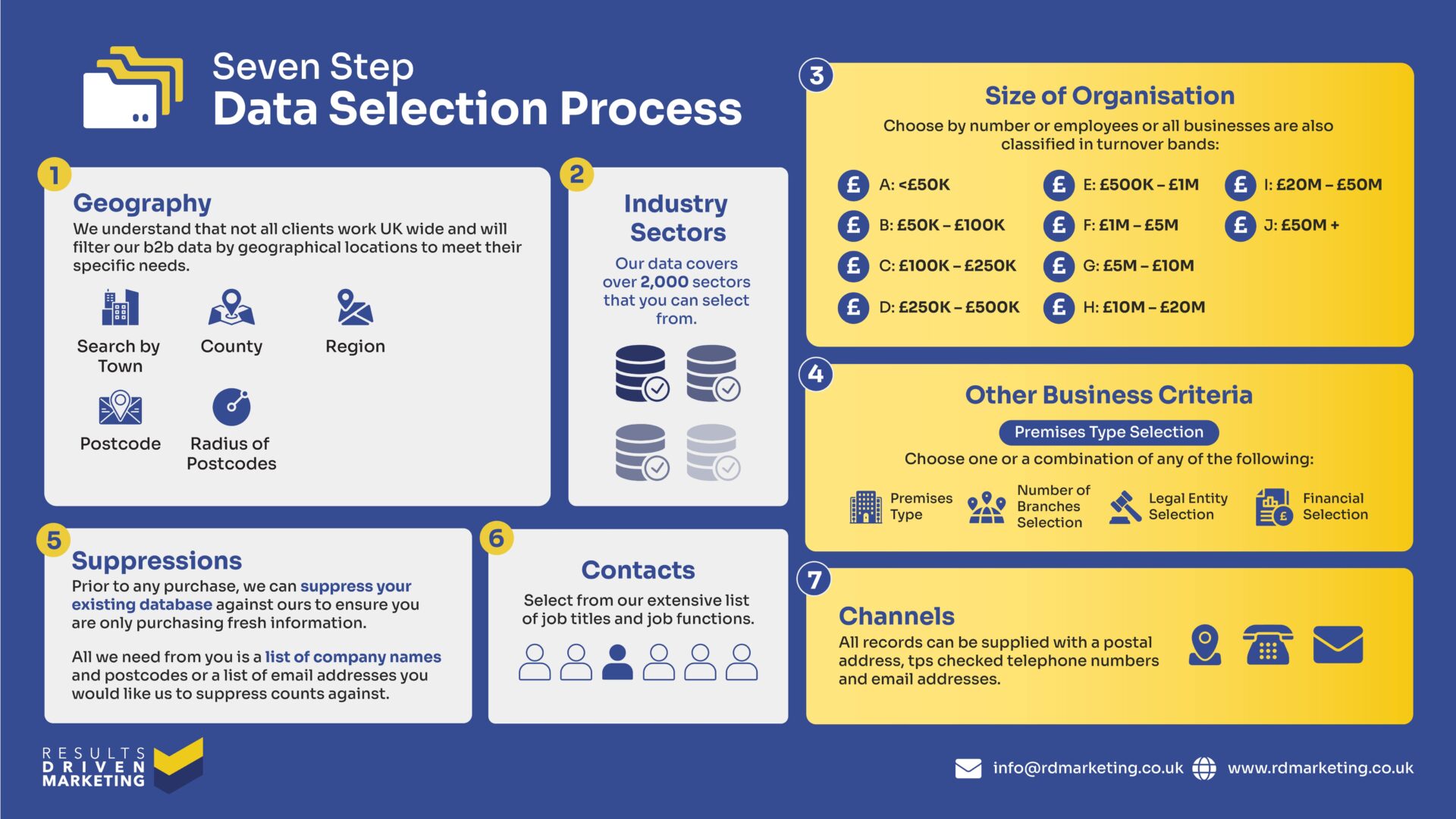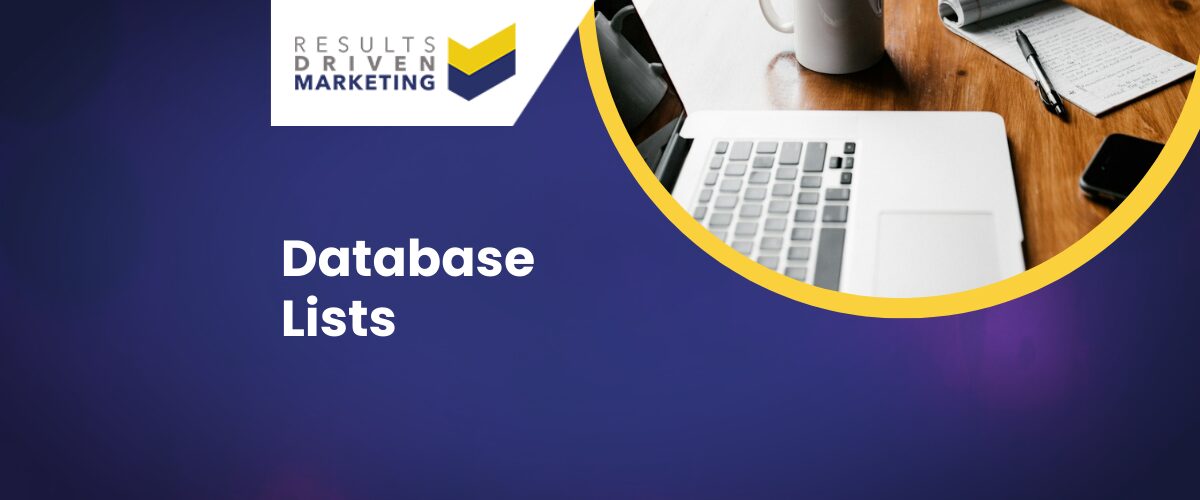
Email Personalisation: The Key to Boosting Engagement and ROI
Email personalisation is essential, as consumers are constantly bombarded with messages. With inboxes so packed, it’s easy for emails to get overlooked. That’s where personalisation makes all the difference—it’s about crafting each email to feel relevant and engaging for the reader.
Instead of sending out generic bulk emails, email personalisation considers individual preferences, behaviors, and needs. This approach makes your communication feel more like a one-on-one conversation than a mass broadcast.
For businesses aiming to improve their return on investment (ROI), email personalisation is truly transformative. Why? Email personalisation is more likely to capture attention, leading to improved open rates, click-through rates, and overall engagement.
By making email personalisation a core part of your email marketing strategy, you’re not just increasing engagement—you’re building loyalty and trust with your audience.
And for those looking to take their campaigns to the next level, specialised services, like B2B Data or Email Address List Data from RD Marketing, provide high-quality information to personalise outreach effectively.
Table of contents:
The Impact of Personalisation on Engagement
So, let’s dive into how email personalisation really ramps up your engagement levels. First off, did you know that emails featuring the recipient’s name in the subject line have a higher likelihood of being opened?
Absolutely! According to recent studies, personalised emails can boost open rates by up to 26%, and that’s not all. When you tailor your content to the interests of the recipient, click-through rates can soar even higher, often seeing an uplift of around 14%. It’s pretty clear that when you make emails feel like they’re crafted just for the reader, people are more likely to engage.
Now, why does this personalised touch work so well? It’s all about making that human connection. Psychological factors play a massive role here. For instance:
- Recognition: Receiving an email that addresses you by name can instantly make you feel acknowledged and valued.
- Relevance: Tailored content that aligns with your past interactions or preferences hits a sweet spot, ensuring that the message resonates more deeply.
- Relationship: Over time, this approach builds a sense of relationship and trust between the brand and the recipient, which is golden for fostering loyalty.
Wondering how you can harness the power of personalisation in your own campaigns? Well, you might want to start by checking out RD Marketing’s B2B Data services, perfect for getting that targeted approach off the ground.
Whether it’s through dynamically updating content based on user behavior or segmenting your Email Address List Data to deliver more relevant messages, the end goal is to make each recipient feel like the message was meant just for them.
The Impact of Personalisation on Engagement
Imagine this: you open your inbox and there it is, an email that not only calls you by name but also talks about things you actually care about. That’s the magic of email personalisation, and trust me, it’s a game changer.
Statistics That Speak Volumes
- A recent study shows that personalised emails deliver six times higher transaction rates. Yes, you heard that right—six times!
- Another report indicates that emails with personalised subject lines are 26% more likely to be opened than those without. This isn’t just a small boost; it’s a significant leap that could mean all the difference in your marketing campaigns.
Real-World Case Studies
- Consider the case of a retail company that implemented email personalisation to target customers based on their previous purchases. The result? A 20% increase in conversion rates.
- Another example comes from a service provider who used segmented and personalised emails to re-engage dormant customers, leading to a 45% uptick in customer activity.
Psychological Triggers
- Relevance: Personalised emails tap into the recipient’s personal preferences and interests, making the content more relevant and engaging.
- Appreciation: When recipients see their name and other personal details, it generates a feeling of being valued and not just another number in the database.
- Anticipation: Personalised content creates anticipation for more meaningful and relevant communications in the future, keeping your audience hooked.
As well as….
Leveraging Data for Personalisation
- Start with robust B2B Data to understand your audience’s demographics and preferences.
- Use Data Enrichment Services to keep your records up-to-date, ensuring that your personalisation efforts are based on the latest and most accurate information.
Tools and Technologies
- Implementing a CTPS Checker can help ensure that your telemarketing efforts are compliant, maximising the effectiveness of personalised calls without risking privacy violations.
- For those looking to expand their reach globally, consider the International Email List which allows for personalised communication across borders, adjusting content based on cultural nuances and preferences.
Key Personalisation Strategies for Email Campaigns
Implementing effective email personalisation requires more than just addressing recipients by their first name.
To truly connect with your audience and enhance engagement, there are several key strategies you can use to make your email campaigns more targeted, relevant, and impactful.
Let’s dive into some of the most effective personalisation strategies, each backed by actionable steps and examples to help you maximise the power of email personalisation in your marketing.
Segmentation
Segmentation is one of the foundational strategies in email personalisation. By dividing your audience into specific groups based on behaviors, demographics, purchase history, or preferences, you’re able to send more relevant messages that speak to their unique needs and interests.
Here’s how segmentation can work in practice:
- Behavioral Segmentation: Group recipients based on how they’ve interacted with your brand, such as recent purchases or website visits. For instance, RD Marketing’s Consumer Data can help businesses understand consumer behavior patterns and create relevant segments.
- Demographic Segmentation: Segmenting by location, age, or industry can be powerful, especially for B2B campaigns. Using a tool like B2B Data, you can fine-tune your approach and send tailored messages based on your audience’s specific industry.
Imagine a fitness brand that segments its audience into groups based on previous purchases—some might receive workout gear recommendations, while others see new arrivals in nutritional products.
By creating relevant segments, your messages feel more like a helpful recommendation than just another email.
Dynamic Content
Dynamic content takes email personalisation a step further by allowing different elements within an email—such as text, images, or offers—to change based on the recipient’s segment.
This flexibility makes each email feel as if it were crafted specifically for each individual.
Examples of dynamic content in action include:
- Personalised Product Recommendations: If someone has recently purchased running shoes, they could receive an email featuring socks or athletic apparel that complements their purchase. With data from an International Email List, you could even customise content based on different geographic preferences.
- Localised Content: Dynamic content enables you to adjust email images and offers based on the recipient’s location. For instance, a travel company might promote sunny beach destinations to one segment while highlighting ski resorts to another, making each message more relevant and engaging.
By incorporating dynamic elements, you can make every email feel individually crafted, enhancing the impact and relevance of your email personalisation efforts.
Behavioral Triggers
Behavioral triggers are automated responses that are sent when a user takes a specific action—think of a welcome email when someone subscribes, an abandoned cart reminder, or a follow-up after a purchase.
These triggered emails are timely and incredibly relevant, often achieving some of the highest engagement rates.
Here are some key behavioral triggers to consider:
- Welcome Emails: When someone first subscribes, a welcome email is a great way to introduce them to your brand and highlight what they can expect from your communications. RD Marketing’s Email Marketing Management Services can help automate this process, ensuring every new subscriber receives a personalised introduction.
- Abandoned Cart Reminders: If a customer leaves an item in their cart, a gentle reminder can nudge them toward completing the purchase. This is especially effective when paired with an incentive, like a discount or free shipping.
By setting up behavioral triggers, you ensure that your emails arrive at the most relevant times, enhancing both engagement and the likelihood of conversion.
Personalised Subject Lines and CTAs
The first thing a recipient sees is your subject line, and crafting one that feels personal can make all the difference.
Similarly, your call-to-action (CTA) should resonate on a personal level, encouraging recipients to take action in a way that feels natural and enticing.
Tips for creating personalised subject lines and CTAs:
- Include the Recipient’s Name: Using the recipient’s first name in the subject line can increase open rates. A subject like “Hey [Name], check out what we have for you!” feels more inviting and direct.
- Tailor the CTA: Instead of a generic “Click here,” try something like “See your personalised recommendations” or “Discover what’s new for you.” Specific, audience-focused CTAs create a sense of exclusivity and connection.
For instance, a retailer could use segmented Direct Mail Data to create targeted subject lines that appeal to different interests.
If a customer has shown interest in outdoor gear, a subject like “Explore New Outdoor Arrivals Just for You” can capture their attention.
Using these strategies, brands can build more personalised and engaging email campaigns, resulting in stronger customer relationships and improved ROI.
For further customisation, services like Data Enrichment Services can provide additional data points, allowing businesses to refine their email personalisation approach and reach each audience with highly relevant content.
Best Practices for Implementing Email Personalisation
To create a successful email personalisation strategy, it’s essential to establish a solid foundation for your personalised email campaigns.
From gathering the right data to ensuring compliance, these best practices provide a roadmap for effectively setting up, maintaining, and optimising your email personalisation efforts.
Collecting and Analysing Customer Data
The foundation of any email personalisation strategy is data. Collecting comprehensive, accurate data on your customers’ names, preferences, purchase history, and behaviors allows you to create messages that feel truly relevant.
- Name and Demographics: Start with basic details, like name, age, and location. Simple personalisation (e.g., using a first name) can increase engagement, and it’s an easy way to make emails feel more personal.
- Preferences and Behaviors: Collect data on what your customers are interested in or have purchased in the past. This information is key to creating personalised recommendations and offers that resonate. For example, RD Marketing’s Consumer Data can help you understand your audience’s interests in detail.
- Sources of Data: Consider leveraging tools like Data Enrichment Services to add depth to your customer profiles, or use Direct Mail Data to broaden your targeting options for direct mail campaigns.
Gathering and analysing this data enables you to segment your audience and tailor your emails to each segment, increasing the effectiveness of your personalised email campaigns.
Leveraging Marketing Automation Tools
Once you’ve collected the right data, marketing automation tools can help you put it into action. Automation not only makes it easier to manage personalised campaigns but also ensures that each email reaches the right person at the right time.
- Automated Segmentation: Use automation to categorise your audience based on different criteria—whether it’s purchase history, engagement level, or geographic location. RD Marketing’s Email Marketing Management Services offer tools that simplify audience segmentation, allowing you to scale up personalisation without extra manual effort.
- Behavioral Triggers: With automation, you can set up triggers for specific actions, such as abandoned carts or product views, to send personalised messages based on real-time behavior. Imagine sending a personalised follow-up message just hours after a cart is abandoned—it’s timely, relevant, and effective.
Automation tools streamline the email personalisation process, making it easier to execute complex, data-driven campaigns and focus on improving the customer experience at scale.
Regularly Testing and Optimising Email Elements
To keep improving your personalised email campaigns, it’s crucial to test and optimise various elements continuously.
Regular testing ensures that your personalisation efforts are on track and helps you understand what resonates best with your audience.
- A/B Testing: Experiment with different subject lines, CTAs, and content variations to see which approaches lead to higher engagement rates. If one subject line with a personalised greeting performs better, make it your go-to for future campaigns.
- Optimise Frequency and Timing: Finding the best times and days to send your emails can make a significant difference. Regularly test and adjust the timing of your messages to match when your audience is most active.
With RD Marketing’s Data Cleansing Services, you can also keep your lists up-to-date, ensuring that your emails are reaching active, engaged recipients and improving the accuracy of your testing.
Privacy and Compliance Considerations
When personalising emails, it’s essential to handle customer data responsibly and ensure that your practices comply with privacy regulations, such as GDPR. Collecting personal information and using it for email personalisation must be done with the utmost care and transparency.
- Obtain Consent: Always get explicit permission from customers before collecting and using their data. Let them know how their data will be used, and make it easy for them to update their preferences or unsubscribe.
- Maintain Compliance: Regularly review your data practices to ensure they align with GDPR and other regulations. Using a CTPS Checker can also help you stay compliant by verifying that your data lists exclude anyone registered with the Telephone Preference Service.
- Secure Data Management: Store and manage customer data securely to prevent unauthorised access. Demonstrating a commitment to data security builds trust with your customers, making them more comfortable with sharing their information.
By following these best practices, you can create a seamless, trustworthy experience that makes each email feel personalised and relevant, without compromising on privacy.
Tools and Technologies for Effective Email Personalisation
To harness the power of email personalisation effectively, choosing the right tools is essential. Various platforms offer robust features for segmentation, automation, and dynamic content, allowing businesses to create tailored email campaigns at scale.
Here’s an overview of some top tools for personalised email campaigns, along with their unique features, pros, and cons, to help you determine which one might be the best fit for your needs.
Mailchimp
Mailchimp is a popular, user-friendly email marketing platform that’s particularly strong in automation and segmentation.
Known for its simplicity and accessibility, it’s ideal for businesses looking to get started with email personalisation without a steep learning curve.
- Pros: Mailchimp offers a wide range of templates, easy-to-use automation tools, and advanced segmentation capabilities. It also integrates with many e-commerce platforms, making it a flexible choice for various business types.
- Cons: While Mailchimp is great for basic personalisation, some of the advanced features, like complex automation workflows, require higher-tier plans, which can be costly for larger teams.
For those looking to grow their mailing lists, RD Marketing’s Email Address List Data can complement Mailchimp’s capabilities by providing quality contacts segmented by industry or preference, ready for targeted outreach.
HubSpot
HubSpot provides a powerful suite of marketing tools, including email marketing capabilities with built-in CRM functionalities.
HubSpot’s strength lies in its ability to manage customer data alongside email campaigns, which makes it ideal for creating personalised experiences across multiple channels.
- Pros: HubSpot allows you to segment contacts based on behavior, demographics, and other factors seamlessly. It’s particularly useful for businesses that want to manage email personalisation alongside broader marketing and sales efforts, thanks to its CRM integration.
- Cons: HubSpot can be on the pricier side, especially for smaller businesses. Some of the more advanced features are only available on premium plans.
For those managing an international client base, HubSpot’s CRM, combined with RD Marketing’s International Email List, can help deliver customised email content to audiences across regions with ease.
Marketo
Marketo, part of Adobe’s suite, is known for its sophisticated automation and personalisation features, designed primarily for large enterprises.
It’s highly versatile, supporting complex automation workflows, predictive content, and detailed segmentation, which makes it ideal for advanced email personalisation efforts.
- Pros: Marketo offers powerful automation capabilities, extensive segmentation options, and dynamic content personalisation, making it a go-to choice for large-scale campaigns. Its reporting and analytics features are also among the best, enabling in-depth performance insights.
- Cons: Marketo has a steeper learning curve and is typically more suited to larger businesses with dedicated marketing teams due to its complexity and cost.
For businesses with large, diverse customer bases, Marketo’s advanced segmentation can be maximised by pairing it with RD Marketing’s B2B Data or Telemarketing Data, which provides the audience information necessary for precise targeting.
Klaviyo
Klaviyo is designed with e-commerce in mind, making it a great choice for businesses looking to boost sales through email personalisation.
- Pros: Klaviyo provides e-commerce-focused templates and triggers, making it easier to implement personalised recommendations, abandoned cart emails, and follow-up messages based on purchase history.
- Cons: It’s primarily focused on e-commerce, so businesses outside that sphere might find some limitations in its feature set.
With RD Marketing’s Data Enrichment Services, Klaviyo users can enrich their existing customer data to create even more precise and personalised campaigns.
Salesforce Marketing Cloud
Salesforce Marketing Cloud is an enterprise-level platform with capabilities tailored for highly personalised customer journeys.
This tool is ideal for businesses with a global audience looking to implement email personalisation at every stage of the customer journey.
- Pros: It offers multi-channel capabilities, allowing for seamless integration of emails with SMS, social media, and more. It’s highly customisable, with robust options for data segmentation, automation, and dynamic content creation.
- Cons: Similar to Marketo, Salesforce Marketing Cloud is a premium tool with a steeper learning curve and a higher price point, making it more suitable for larger organisations.
For those managing multiple communication channels, Salesforce paired with RD Marketing’s Direct Mail Data enables cohesive messaging across digital and offline touchpoints.
Measuring Success: KPIs and Metrics for Email Personalisation
Once you’ve set up your personalised email campaigns, it’s crucial to measure their success. Tracking the right metrics gives you insights into how effective your email personalisation efforts are, allowing you to adjust and improve as you go.
Here are the key performance indicators (KPIs) to watch, along with tips on how to interpret each one in the context of your personalisation strategies.
Open Rate
The open rate tells you how many recipients opened your email, providing a quick snapshot of how engaging your subject lines are.
Since personalisation often starts with the subject line, monitoring this metric can reveal how well your approach resonates with recipients.
- How to Interpret: A higher open rate suggests that your personalised subject lines are capturing interest. If open rates are lower than expected, consider testing subject lines that include the recipient’s name or directly address their preferences.
- Optimising with Data: Using RD Marketing’s Email Address List Data for segmentation allows you to create more relevant subject lines, which can improve open rates by targeting the right audience with the right messaging.
Click-Through Rate (CTR)
Click-through rate indicates how many recipients clicked on a link in your email, showing how effective your email content is in encouraging further action.
This metric is vital for understanding how well your email personalisation engages readers beyond the subject line.
- How to Interpret: High CTRs mean that recipients find your email content relevant and engaging. Low CTRs, on the other hand, may indicate a need for more tailored content or calls-to-action that better reflect individual interests.
- Optimising with Data: By using targeted lists like RD Marketing’s Telemarketing Data or Consumer Data, you can ensure that your content aligns closely with the interests of each audience segment, thereby improving click-through rates.
Conversion Rate
The conversion rate is perhaps one of the most telling metrics of success, as it measures the percentage of email recipients who completed a desired action, such as making a purchase or signing up for a service.
This metric highlights the effectiveness of your email personalisation in driving concrete results.
- How to Interpret: A high conversion rate suggests that your personalised content is effectively moving recipients to act. If conversion rates are low, consider refining your CTAs or using behavioral triggers to align your offers with the recipient’s stage in the buyer’s journey.
- Optimising with Data: With RD Marketing’s Data Enrichment Services, you can enhance your customer profiles, making it easier to tailor offers that resonate on a deeper level, thereby boosting conversion rates.
Unsubscribe Rate
Unsubscribe rate shows the percentage of recipients who opted out after receiving an email.
While some unsubscribes are inevitable, a high rate may suggest that your personalisation efforts are missing the mark, or that your content doesn’t align with the recipient’s expectations.
- How to Interpret: If your unsubscribe rate is above industry averages, it may be a sign that the frequency, tone, or relevance of your emails isn’t resonating. Reviewing your segmentation strategy can help ensure that recipients only receive content that truly interests them.
- Optimising with Data: By keeping your lists accurate and relevant through RD Marketing’s Data Cleansing Services, you reduce the risk of sending unwanted messages, helping to maintain a low unsubscribe rate.
Bounce Rate
Bounce rate measures the percentage of emails that couldn’t be delivered. A high bounce rate can indicate outdated contact information or an issue with your email list quality.
Monitoring bounce rates is crucial for maintaining a strong sender reputation and ensuring that your emails reach the inbox.
- How to Interpret: A high bounce rate may signal a need to clean up your list. If too many emails bounce, email providers might start flagging your content as spam.
- Optimising with Data: Regularly using RD Marketing’s CTPS Checker and other compliance tools can help keep your list up-to-date and reduce bounces, which is essential for maintaining deliverability.
Revenue per Email
Revenue per email measures the average amount of revenue generated per email sent, providing a direct link between your email campaigns and sales.
This metric is particularly valuable for evaluating the ROI of your email personalisation strategy.
- How to Interpret: High revenue per email indicates that your personalised email campaigns are directly contributing to sales. If this metric is lower than expected, you might need to focus on refining your targeting and personalisation tactics to better engage recipients.
- Optimising with Data: RD Marketing’s International Email List can help you reach targeted audiences globally, maximising your revenue potential across different markets.










